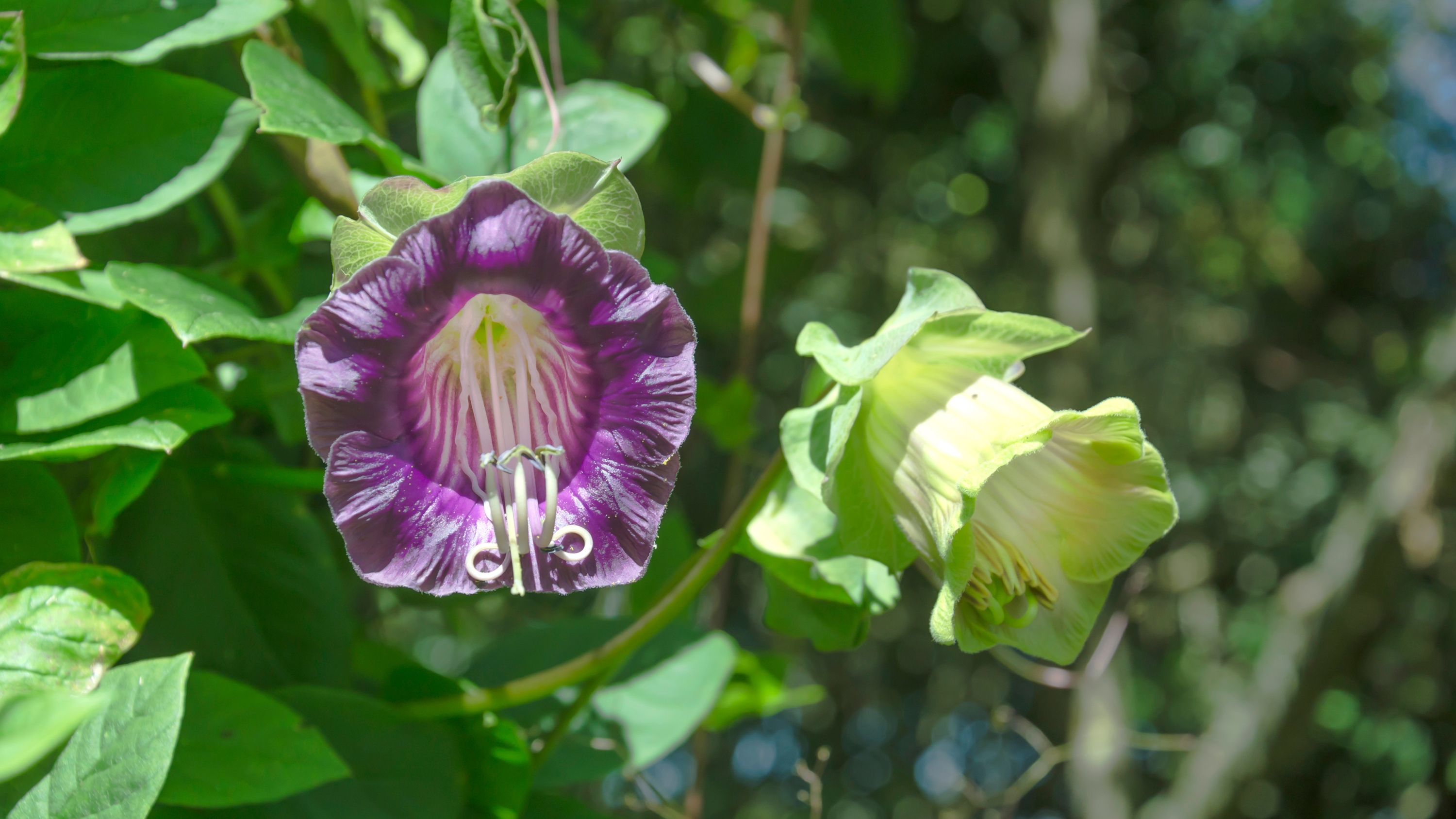Sarah Raven shares her tips for adding the exotic Cobaea scandens climbing plant to your garden
You may not have heard about Cobaea scandens, but once you've seen it, you will want this vigorous flowering climber in your garden

If you want the finest garden design ideas that incorporate flowers, you can't go wrong with advice from the wonderful Sarah Raven. The gardener has recently launched a brand-new podcast, and we can't get enough of her flower-related tips.
The most recent episode gives thorough advice on how to cultivate an exotic and stunningly beautiful plant that does surprisingly well in climates with colder winters – Cobaea scandens, also known as the 'cup and saucer' plant.
We can definitely see where it gets its common name – the trumpet-shaped flowers do look like delicate teacups placed on frilly saucers. 'It looks like it belongs in Alice in Wonderland', says gardener Arthur Parkinson in conversation with Sarah Raven on her podcast. You will be surprised by how easy it is to grow this beauty in your garden – if you follow Sarah Raven's Cobaea scandens tip.
1. Plant early
A post shared by Sarah Chase (@waitechase)
A photo posted by on
Right now is the perfect time to start growing your Cobaea plants – you will get flowers next Christmas, provided there aren't hard frosts. Arthur explains that the 'flat, disc-shaped seeds' are 'like a courgette, really', and must be planted vertically in the compost to avoid the seed rotting the soil.
Once you've planted the seeds, singly in seed trays, place in a warm kitchen on the window sill. The heat of the kitchen will help these hot-climate seeds germinate.
Then, 'treat it like a mini houseplant until it develops tendrils'. Give it a cane for plant support and keep it on the window sill until May when it's ready to be transplanted into the garden.
2. Don't overwater
A post shared by Hageblogger Espen Skarphagen (@skarpihagen.no)
A photo posted by on
The most important thing is not to overwater the seeds. 'Don't water the compost as long as it's moist,' urges Arthur. Cobaea is native to Mexico – it loves heat and doesn't like too much water.
Rotting can also be a danger once the plant is outside if the summer is exceptionally wet. However, as Sarah explains, 'if you mulch the plants quite deeply (6 inches of dry mulch), you will be able to overwinter and perennialize them. They will grow as tall as 40 foot under the right conditions.'
Our ultimate guide to mulching is packed with top tips on adding mulch to your garden.
3. Let it cascade or climb – the choice is yours!
A post shared by Den glade høne 💛 (@dengladehone)
A photo posted by on
Cobaea is known mainly as a climbing plant, which makes it great for garden walls, pergola ideas, and trellises, but 'if you don't give it a climbing frame, it will cascade down', says Sarah.
They will do this over several metres and can even 'form a natural net curtain', which makes them a great for garden privacy ideas.
4. Use as a cutting flower
A post shared by Bella’s Gardening Journal (@feastsandflowers)
A photo posted by on
Finally, Cobaea make for a stunning cutting flower – delicate and billowing, and delightful in winter when there are so few flowers to pick. 'I've definitely picked them just before Christmas,' says Sarah – although you will need a frost-free December for that to happen.
'I often pick them with the tendrils because I love the crazy shape,' she adds. 'It just makes the whole arrangement look more dynamic.'
To get the most of your cut Cobaea arrangement, place the freshly cut bunch in boiling water for five seconds and then in cold water. 'You'll get 10 days to two weeks out of them,' Sarah concludes.
Be patient with these unusual plants, 'exotic but happy in the garden', as Arthur puts it, and you'll have an amazing flowering display in your garden come winter.
Anna writes about interior design and gardening. Her work has appeared in Homes & Gardens, Livingetc, and many other publications. She is an experienced outdoor and indoor gardener and has a passion for growing roses and Japanese maples in her outside space.
